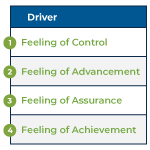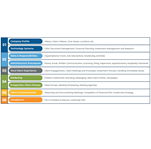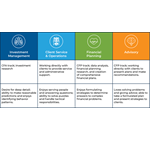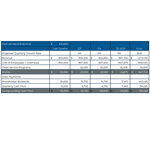
To run a healthy business, firm owners need to have a good handle on what aspects of their business are actually working well, and where key parts of the business may be trending negatively, in order to implement improvements to whatever is most critically in need of change. But if business owners don’t have a clear handle on the data and Key Performance Indicators that drive the business forward, making decisions about which areas of the business to improve can become unwittingly arbitrary and unfocused. As a result, good strategic planning isn’t just about trying to create the ideal “One Page Business Plan”… more directly, it’s about advisory firm owners figuring out which are the right things to change, to ensure that the decisions they make really do impact the business in the most positive way.
In this guest post, Angie Herbers – Chief Executive and Senior Consultant at Herbers & Company, an independent management and growth consultancy for financial advisory firms – discusses the Key Performance Indicators to track, and the key questions to ask that focus on three principal business planning phases: Strategy, Management, and Innovation (SMI). By examining each of these key areas in sequence, firm owners can develop workable strategies to tackle the most relevant problems that may be impeding business growth.
The phases of the SMI process begin by examining Strategy, which involves identifying the most relevant – and measurable – problems of the firm and the Key Performance Indicators (KPIs) that will be used to measure the efficacy of the Solution to be implemented. The Strategy phase involves choosing a Solution that will fix or mitigate the selected problem, the Tactics to use to implement the Solution, and the expected Trend of how the KPIs should move to monitor the efficacy of the Solution. (A key point, as many firms implement solutions without a framework to track whether they’re actually working to achieve the desired results!)
When assessing their firm’s Management, financial advisors often consider what is most urgent and important in the present moment, but it’s crucial to also recognize the important-but-not-urgent that may be holding them back from really solving the firm’s challenges, including and especially identifying any broken systems in the company’s infrastructure. By addressing issues that detract from a well-run Management system, the firm will be able to effectively focus on the other phases of the business planning process.
Using Innovation to improve the business begins with identifying the firm’s competitive Advantage in client service, generating Ideas to win with the firm’s main Advantage (as in practice, most advisory firm innovation is about doubling down on what the firm already does well, not creating something entirely fantastical and new!), and then selecting one – and only one – idea to implement. For some ideas that are more complex or potentially expensive, the firm may also need to conduct some degree of market research to choose a Delivery process to execute their ideas most effectively.
Once the firm has reviewed their SMI elements, the next step is to take the information gathered from the process to develop the right goals for the business. Goals for each phase of SMI can be identified and monitored, and once those goals are accomplished, the firm can then revisit the process to reassess their SMI areas to identify further areas of focus.
Ultimately, the key point is that business planning with the SMI model can help financial advisors choose the right problems to target and strategies to implement in order to improve their firms, by guiding them through a systematic process to outline objectives for where they are now, where they are trying to go, and how they are different. And by identifying the most salient problems and establishing the right goals for the firm, advisors can facilitate efficient growth and ensure that their client service continues to operate at a high level!










